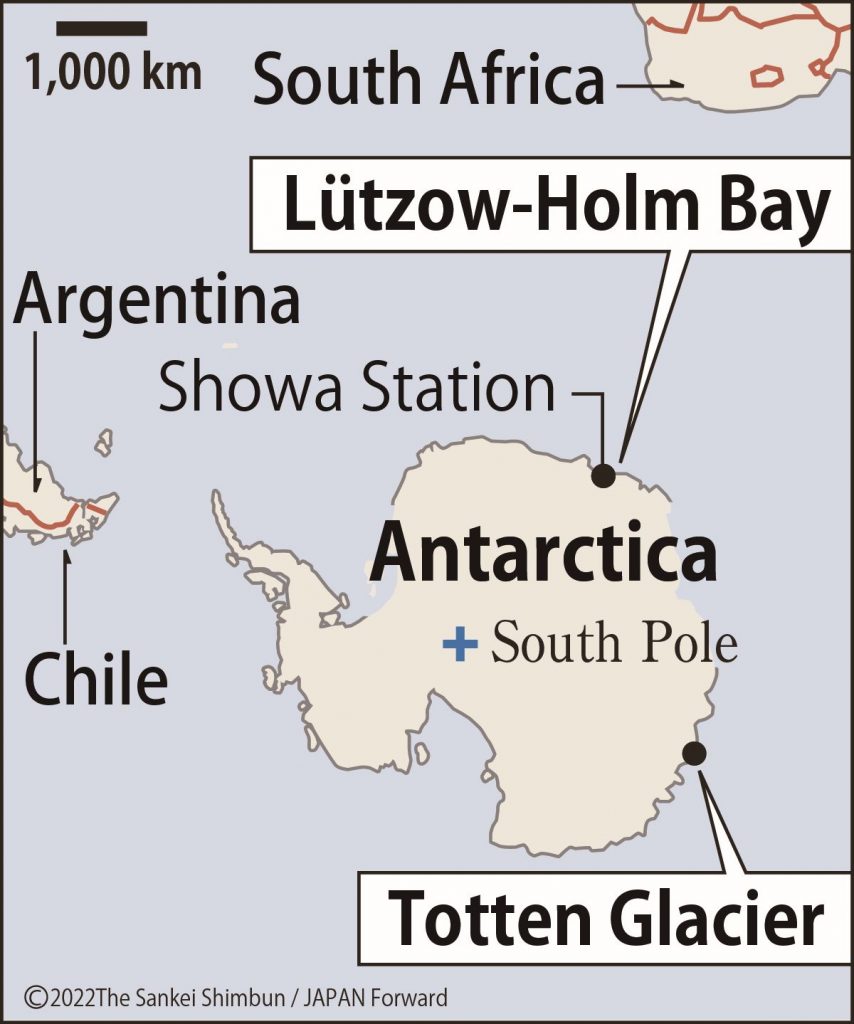
Gachapin sees the JARE-64 Antarctic expedition off as it departs on November 11 from the Tokyo International Cruise Terminal in Aomi, Tokyo (© Sankei by Nobuo Serizawa).
Captained by Satoshi Imura, the icebreaker vessel Shirase departed from Aomi, Tokyo, on November 11. The 64th Japanese Antarctic Research Expedition (JARE-64) is headed for Showa Station on Antarctica.
For the first time, JARE is carrying an autonomous underwater vehicle (AUV) that can dive underneath the thick Antarctic ice to investigate the impacts of global warming. The research team will observe the shape of the underside of glaciers, seafloor topography, and water quality at Lützow-Holm Bay where the Showa Station is located.
We interviewed Dr Takuji Nakamura, Director-General of the National Institute of Polar Research, to learn about the anticipated results of the mission.
--JARE-64 will mainly observe the Totten Glacier, one of the largest in East Antarctica. Why?
Much of Antarctica’s ice is located on the east side of the continent. Warm water that flows underneath the ice is believed to be rapidly melting the ice sheet. However, we still do not know how the ice will melt due to the rise in air and seawater temperatures, or how much of it will be melted. We will use a range of equipment to measure temperatures in the ocean from top to bottom. We hope to uncover one of the mysteries of global warming.

--What other research will be conducted?
We are also preparing to conduct our third ice core drilling. Evidence of global environmental changes can be found in the thick ice on Antarctica. To date, we have analyzed past climate conditions by digging up ice formed 720,000 years ago. We will be drilling ice cores up to one million years old to examine Earth’s glacial and interglacial periods.

--What is the significance of conducting research in Antarctica?
The Intergovernmental Panel on Climate Change (IPCC) report tell is telling. It says: "It is unequivocal that human influence has warmed the atmosphere, ocean and land." Changes in Antarctica, where 90 percent of the Earth’s ice is located, hold the key to explaining rises in global temperature and sea levels. Examining climates of long ago is essential to look into the Earth’s future. So it is becoming increasingly important to dig into the Antarctic ice to learn about the Earth’s past.
Read the rest of this article here to learn about the expedition. And find more great articles on the environment and the challenges of achieving the SDGs, on our new website Japan 2 Earth (J2E), sparking a transition to the future.
RELATED:
Author: Nobuo Serizawa








